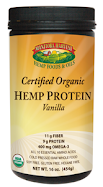Using syrups and herbal teas to control coughing has been known since antiquity but it was not until the nineteenth century that the actual cough drop was born.One of the first mass-produced cough drops was the Smith Brothers cough drop. James Smith was operating a restaurant when a journeyman introduced him to a formula for a cough candy. James mixed up a batch in his kitchen and started to sell them. Demand for the product grew and he began advertising in 1852. In 1866 when James Smith died, his two sons took over and renamed the company Smith Brothers. During this time, they sold their cough drops in large glass bowls. In 1872 they developed a unique package to prevent imitators. And so the cough drop was born. Today, the cough drop business has grown as part of the $2 billion cough and cold market.
Cough drops are made up of ingredients found in typical hard candy recipes. They are mixed together, cooked, cooled, and packaged. The essential ingredients include sugar, corn syrup, acids, colors, and flavors. The problem is that the cough drop today, contains many artificial ingredients such as aromatic chemicals like methyl anthranilate and ethyl caporate rather than natural ingredients such as good old herbs that were once used when James Smith first created the cough drop. So the next time you're feeling sluggish, instead buying a pack of cough drops that contain artificial ingredients and dyes, try a homemade recipe infused with your favorite herbs. (see recipe below)
Ingredients In The Natural Cough Drop
Sugar is responsible for the physical structure of the cough drop along with its sweet taste. Corn syrup is a main component of cough drops. The main reason it is used is to control the crystallization of sugar. It also provides some sweetness and body to the cough drop. Additionally, it reduces the formation of dust from sugar during the blending stage. To cover the taste of the active ingredients, various natural flavors from fruits, berries, and honey are used. Active ingredients such as eucalyptus, vitamin C, echinacea or ginko biloba, peppermint oil are used and believed to have a medicinal effect functioning as a relief agent for minor mouth and throat irritations.
Recipe
Ingredients
1 cup sugar
1/3 cup light corn syrup
1 1/2 cup waterherbs (see below for herb options)
vegetable/food coloring (optional)
powdered sugar (optional)
Directions
1. Make a strong tea with the herbs. Steep the herbs in 1 1/2 cups of water.
2. Mix sugar, corn syrup and tea. Cook over low heat, stirring until sugar is dissolved and mixture boils.
3. Continue boiling without stirring until the mixture begins to crystallize.
4. Reduce heat. Wash away crystals from the side of your pan with a damp cloth.
5. Remove from the heat after a few minutes. (Optional: Add food coloring)
6. Drop some of the mixture from the tip of a spoon onto a greased surface or into prepared hard candy molds.
7. Allow to harden and cool completely before removing.
8. Roll the candies in powdered sugar and wrap in plastic wrap or waxed paper for storage.
Herb Choices (Loose herbs found in natural food stores or prepared teabags) that sooth the throat and provide
Herb Choices (Loose herbs found in natural food stores or prepared teabags) that sooth the throat and provide
Peppermint /Spearmint : Soothe the bronchial and help eases sore throats
Ginger: Soothing (Tastes yummy)
Horehound: Great for congestion
Thyme: Contains antiseptic and antibacterial properties for coughs and colds
Mullein: Helps ease coughs
Marshmallow: Very soothing and helps shrink inflamed bronchial making it easier to breathe
Slippery Elm: Relieves inflammation
Fennel:Sooths soar throats and is great for really bad coughs



.jpg)



No comments:
Post a Comment